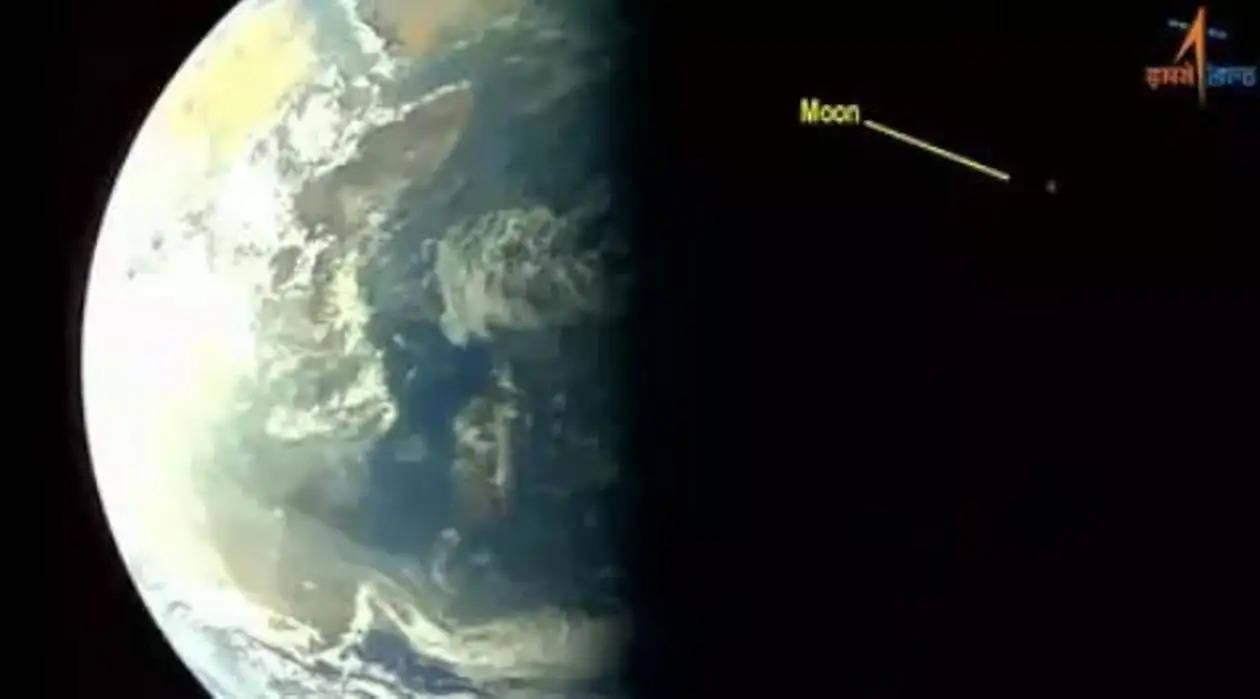Aditya-L1 captures stunning selfie of Earth and Moon from space
Aditya-L1, India's pioneering solar space observatory mission, has reached a significant milestone on its nearly four-month-long journey to its ultimate celestial destination. During its transit, this mission has captured remarkable images of Earth and its surroundings. Among these captivating images, there is a memorable selfie showcasing two critical payloads. The first, known as the Visible Emission Line Coronagraph (VELC), is designed for in-depth Corona imaging and spectroscopy studies. The second payload, the Solar Ultraviolet Imaging Telescope (SUIT), is equipped to capture narrow and broadband images of the Photosphere and Chromosphere of the Sun.

These striking visuals provide a glimpse into the innovative scientific capabilities of Aditya-L1 as it continues its mission to study and understand the dynamic phenomena of our Sun.
In another compelling photograph, Aditya-L1's onboard camera offers a close-up view of Earth and a distant perspective of the Moon. This remarkable image was captured from Aditya-L1's vantage point at Lagrange Point-1 (L1), approximately 1.5 million kilometers away from Earth.
Lagrange Point-1, or L1, is a unique position in space where the gravitational forces of two significant celestial bodies, namely the Sun and Earth, are precisely balanced. This delicate equilibrium allows any object positioned at L1 to maintain relative stability in relation to both the Sun and Earth.
Aditya-L1 embarked on its mission on September 2, launching aboard a PSLV rocket. Currently, it is in its Earth-bound phase, which spans 16 days from the day of launch. This phase marks a crucial step in the mission as Aditya-L1 journeys toward its destination, where it will conduct vital observations and research related to our Sun and its interactions with Earth and the broader solar system.
On Tuesday, the dedicated team of scientists at the Isro Telemetry, Tracking, and Command Network (Istrac) achieved a significant milestone by executing Aditya-L1 spacecraft's second Earth-bound maneuver with precision. As a result of this successful maneuver, the spacecraft has now transitioned into a new orbit, measuring 282 kilometers at its closest point to Earth and extending to an impressive 40,225 kilometers at its farthest point. This accomplishment marks another crucial step in Aditya-L1's journey towards its mission objectives.
The Istrac/Isro ground stations in Mauritius, Bengaluru, and Port Blair monitored the satellite throughout this operation. The third out of five Earth-bound maneuvers is set to take place at 2:30 AM on September 10.
On Sunday, September 3, following the launch of Aditya-L1, Isro successfully executed the initial Earth-bound maneuver, placing the spacecraft into a 245km x 22,459km orbit. Aditya-L1 is a specialized satellite designed for in-depth solar research and is equipped with seven unique payloads.
These payloads include five developed by Isro and two in partnership with academic institutions, all of which are created domestically. These Earth-bound maneuvers are essential to provide the spacecraft with the required velocity for its journey toward reaching the L1 position.
Following this, Aditya-L1 will undergo a Trans-Lagrangian1 Insertion (TLI) maneuver, commencing its 110-day journey towards L1. Upon reaching the L1 point, another maneuver will position Aditya-L1 into an orbit around L1, a gravitationally stable point situated between the Earth and the Sun.
To join us on Facebook Click Here and Subscribe to UdaipurTimes Broadcast channels on GoogleNews | Telegram | Signal



